Pinguicula from Laguna
de Zempoala
(cliquer sur le drapeau pour la
version : )
go to : Home
index of species
TAXONOMY:
Family :
Lentibulariaceae
Genus :
Pinguicula
Name :
not yet published
Sub-classification
(Casper)
: link
Publication :
no publication
DESCRIPTION :
-
soon -
translation
:
-
soon -
ORIGIN AND HISTORY :
One of the plants collected and sold in the
80's by the famous Harald Weiner as seeds.
Map / LOCALISATION :
Between
two states, the state of Mexico and the state of Mexico, the national Park of Lagunas
de Zempoala covers 4 700 hectares.
There
are in fact more than 10 hollows from volcanic origin in this park. For these
10, three have water all year round : Zempoala, Tonatihua and Aguaprieta. Compila,
Seca, Quila and Hueyapan have sometimes water.
(click
on the maps for better location and relief maps)

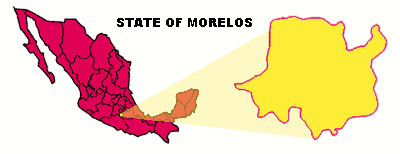
HABITAT:
No data, the
vegetation around the lagunas is composed by pines, oaks and Abies. The plants
may be found as usual on a hill side, somewhere around the laguna and in the
forest. The plants should also be reached by feet or car or at least no far a
road or a walking trail. Altitude given is 2900m.
The climat is wet semicold with yearly
average temperatures between 5 to 12°C. There are often rains.
TEMPERATURE
and PRECIPITATIONS :
Click
on the graph to enlarge
and see the graph of normal precipitation and normal average temperatures.
Normal values are 30-year averages for the period 1961 to 1990. The weather
stations are grouped by region (see map of weather
stations).
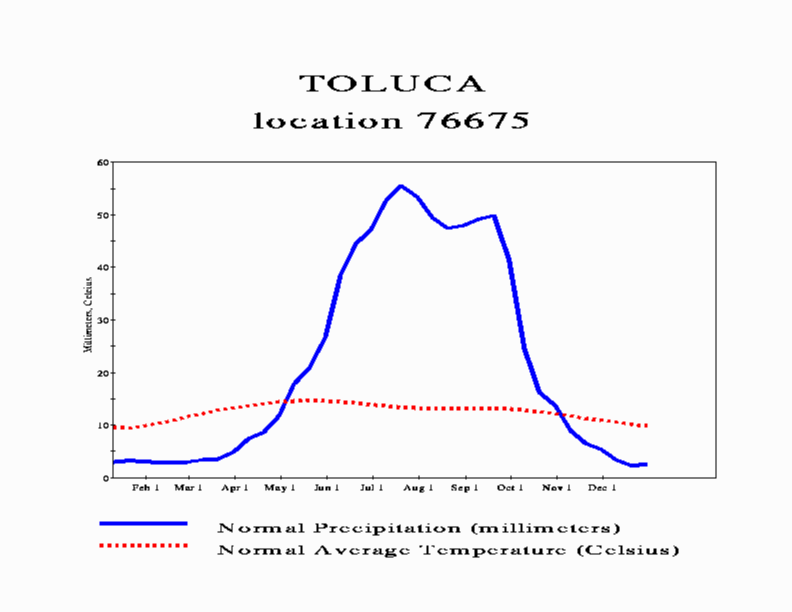
Introduction in culture
:
The
plant was found by Harald Weiner and only few plants remain today in culture. I only
know worldwide three sources : one was in UK, in Paul Temple collection's and
given to me in july 2003, the other source, in Australia, in Helmut Kibelis's
collection, the last one in Germany, in a shy amateur's collection. Without these
three persons, the plants would have been lost in culture !
CULTURE
AND MULTIPLICATION :
(North
hemisphere, France
near Paris, in a polycarbonate greenhouse - see the map
-)
Life
cycle :
The
life cycle observed in culture for this Pinguicula
consists of two seasons, one wet and the other dry (see link). The plant forms different
leaf rosettes according to the season. During the resting months (winter) the
small succulent rosette is composed of numerous smaller non-carnivorous hairy leaves. The
carnivorous leaves are produced in spring and during all summer. Casper
thought that the plant was homophyllous (one kind of leaves all the year),
Oliver Gluch, was the first to write that Pinguicula agnata is clearly
heterophyllous (different leaves in winter and summer).
Media
: I use a 100 % mineral media :
2 perlite, 2 vermiculite, 1 small sand (for aquarium), 1 fine white sand, 1
pouzzolane (volcanic lava), 1 aqualit (expansed ceramic for aquarium). The
aqualit can be replaced by 1 of pouzzolane. Plants in this media grow slower
but have a stronger root system.
Pot
: plastic,
colour terracotta, diameter 12.5cm, height 12cm.
Cultivation
:
I
think that a slightly airy situation inside the greenhouse is important
to avoid air stagnation. For this reason, I use a fan 24h/24h all the year
round.
Watering
is very important : from
May to September (summer). I let the media drying slightly between two
watering. I use rain water poured on the top of the pot taking care
not to wet the rosette. From October to April, It is important to let
the media drying completely (no watering) but with an atmospheric humidity of
about 80%.
The mentioned months are indicative and can change
according to your own growing conditions. In fact, when this Pinguicula
begins to produce its non-carnivorous leaves, you have to stop watering and
let the pot drying out completely. Inversely, when the plant begins to produce
in early spring its carnivorous leaves, you have to progressively start
watering again the pot.
Temperatures : during
growth period, day temperatures are about 25°C but can reach 35°C when the
sun is shining on the greenhouse in spite of the use of shading covers.
Night temperatures are around 20°C. During
resting period : day/night over freezing point. Lower temperature
observed : - 4°C. I use an electronic petroleum heater to provide heat.
Flowering
period : not yet observed
Multiplication
:
The
plants can be propagated easily using non-carnivorous leaves separated from
the rosette at the end of winter. You only have to carefully tear out the
totality of the leaf particularly with it's white base as the new plantlets
will sprout from this area. Don't try with the summer leaves, it is harder.
PICTURES: (click to
enlarge)
|
- Pictures of the
plants soon - |
|
|
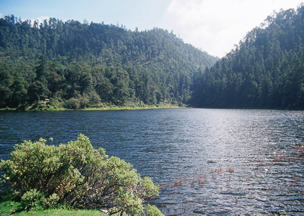
Lagunas
de Zempoala *
Between
two states, the natural park of Lagunas
de Zempoala covered 4700 hectares of the states of Mexico and Morelos.
Photo:
Luis Romo
This
image in its original context, on the page :
http://www.reforma.com
*
see footnote |
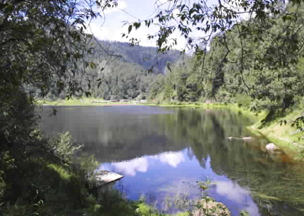
Lagunas de Zempoala
*
Two
pairs of lakes.
The
park, surrounded by pine forests, counts three
small lakes.
Photo: Jesús Alejandro Velázquez
This
image in its original context, on the page :
http://www.reforma.com
*
see footnote |
|
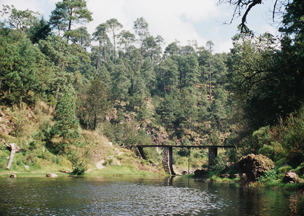
Lagunas
de Zempoala*
Abundant nature the wooded zone exceeds the limits of the park,
reaching El Ajusco.
Photo:
Luis Romo
This
image in its original context, on the page :
http://www.reforma.com
*
see footnote |
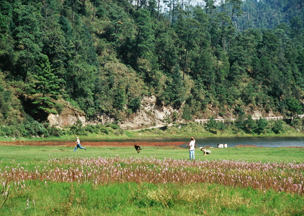
Lagunas de
Zempoala *
You
will enjoy the landscape. The park counts beautiful paths to make a
walk on foot or horse.
Photo:
Luis Romo
This
image in its original context, on the page :
http://www.reforma.com
*
see footnote |
|
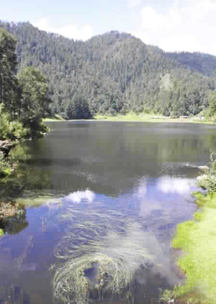
Lagunas
de Zempoala *
During eight months, the lakes become an excellent place to fish in crystalline waters.
Photo: Jesús Alejandro Velázquez
This
image in its original context, on the page :
http://www.reforma.com
*
see footnote |
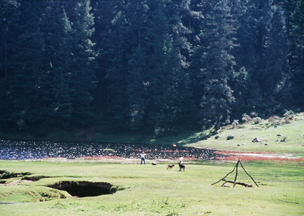
Lagunas de
Zempoala *
This area is always beautiful.
You will find always beautiful lakes and beautiful landscapes.
Photo:
Luis Romo
This
image in its original context, on the page :
http://www.reforma.com
*
see footnote |
|
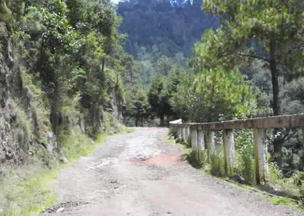
Lagunas
de Zempoala
If you want to visit this palce, you
must take good shoes and warm clothes, since the area is cold and
wet.
Photo: Jesús Alejandro Velázquez
This
image in its original context, on the page :
http://www.reforma.com
*
see footnote |
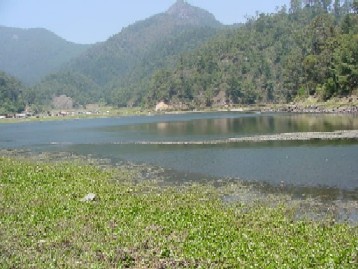
Lagunas
de Zempoala
Photo
: L.C. Silvia Patricia Pérez Sabino
This
image in its original context, on the page :
link |
|

Lagunas
de Zempoala
Photo
: L.C. Silvia Patricia Pérez Sabino
This
image in its original context, on the page :
link |
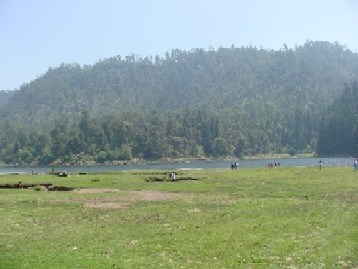
Lagunas
de Zempoala
Photo
: L.C. Silvia Patricia Pérez Sabino
This
image in its original context, on the page :
link |
*
: I am waiting for the agreement of http://www.reforma.com
for using their pictures in this website and hope
to have a positive answer soon.












